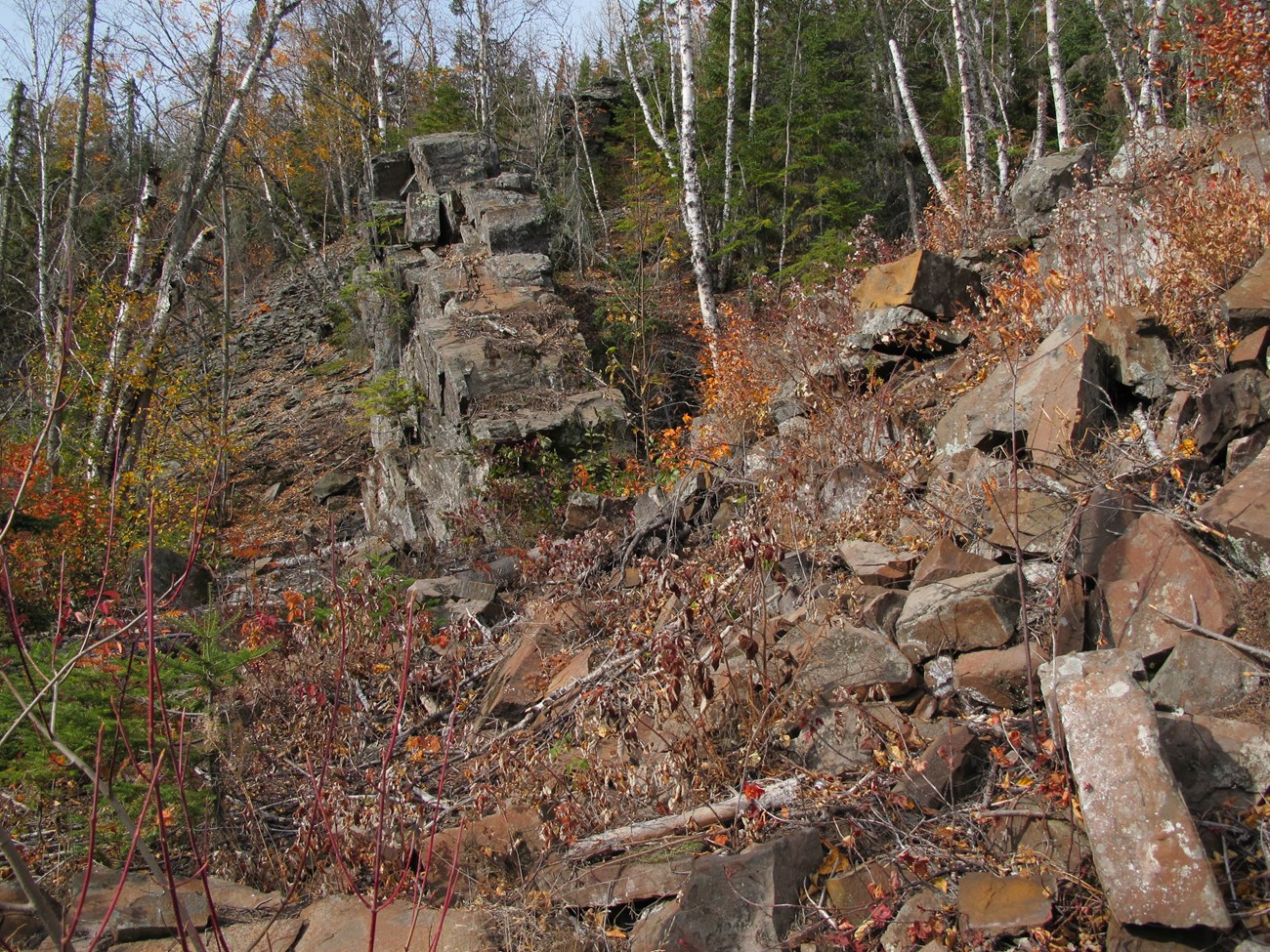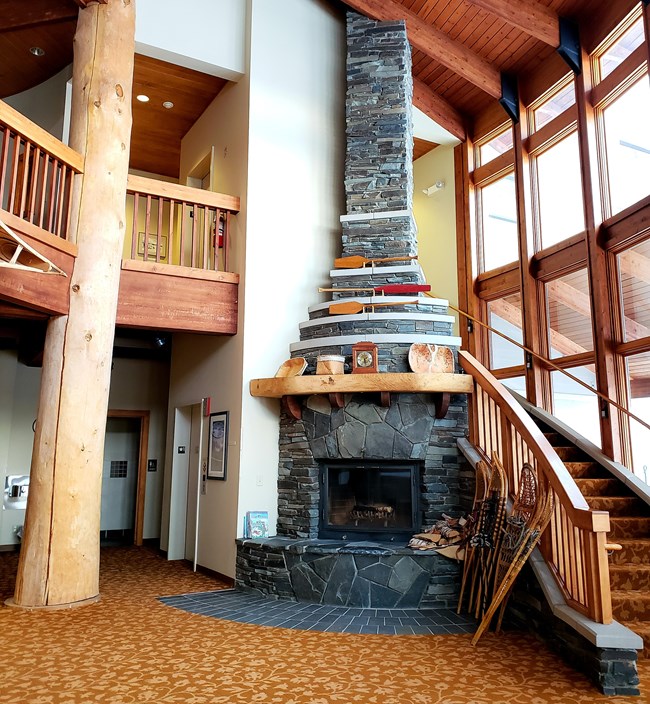
NPS photo / M. Plummer-Steen Very Old RockApproximately 1.8 to 1.9 billion years ago, in a relatively quiet and deep ocean, volcanic islands deposited layers of gravel, sand, silt, and clay. Over an incomprehensibly long period of time, these deposits hardened into the layered rock you see exposed along the Mount Rose trail. This formation of rocks pre-dates the proliferation of life in the Earth’s oceans. This means there are no fossils so far found in these layers. Much later in time, an immense set of complicated cracks broke apart the Earth’s crust. This crack system, called a Midcontinent Rift, extended from the present-day Lake Superior Basin all the way down to Kansas. Extremely hot molten magma welled up from deep inside the Earth and pushed through the rift, creating the long, undulating ridges you see around you. These rugged hills and boggy lowlands, shear rock cliffs, shallow incised bays and Lake Superior, all come together in the highlands of Grand Portage. This extraordinary and impressive landscape was created by the different weathering rates of two types of rocks produced during Precambrian time. For nearly one billion years, stream erosion, and glacial scour have removed much more of the soft than the hard rock leaving a modern relief of more than 600 feet. 
NPS photo / G.M. Spoto Look AroundWhen you arrive at Grand Portage National Monument and get out of your vehicle, your eyes will likely be drawn up to piles of broken rocks with a gray-green cast. Above the piles are cliffs in which you may be able to see horizontal layering; at your feet you may notice the layers slightly tilt towards the lake. Nearly two billion years old, these rocks are known as the Rove Formation. As you walk into the Heritage Center, you will see the tallest fireplace in the county. The trim in the Heritage Center and the fireplaces and foundations of reconstructed buildings in the historic depot are all built from this stone. The North West Company also used it in the original depot completed in 1789. On each side of the parking lot are dark, nearly vertical stacked rocks which stick out as walls because they are much harder than the Rove rocks between and are much harder for water and ice to break apart. 
NPS photo / B. Clayton |
Last updated: January 23, 2024
